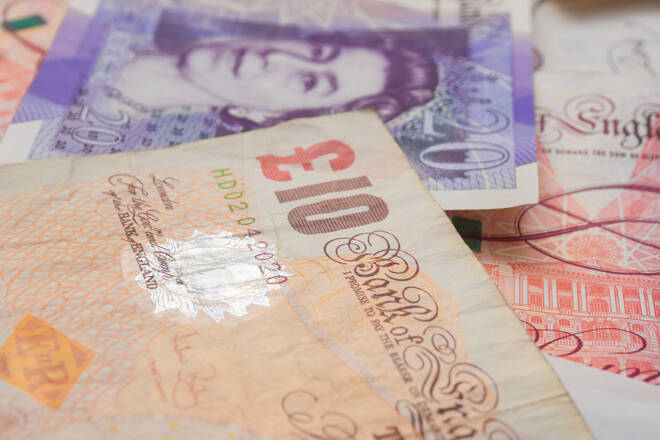Advertisement
Advertisement
GBP/USD Price Forecast: Avoiding Sub-$1.2184 Would Deliver $1.23
By:
It is another quiet day on the UK economic calendar. A lack of stats and BoE commentary will leave the market to focus on tomorrow's data dump.
It is yet another day ahead on the UK economic calendar. There are no UK economic indicators to provide the Pound with direction.
There are also no scheduled Monetary Policy Committee member speeches to provide direction. The lack of stats and Bank of England commentary will leave the Pound in the hands of market risk sentiment ahead of UK GDP and production figures on Friday.
Following the softer US inflation numbers, the focus will now turn to UK Q2 GDP and manufacturing and industrial production figures. Weak numbers could question whether the BoE can deliver another sizeable rate hike to bring inflation to target.
However, before the Friday stats, the Pound has to navigate the US session. US wholesale inflationary pressures will need to soften to support the Pound at the current levels.
GBP/USD Price Action
At the time of writing, the Pound was down 0.07% to $1.22017.
This morning, the Pound rose to an early high of $1.22210 before falling to a low of 1.21818.
Technical Indicators
The Pound will need to avoid the $1.2184 pivot to target the Wednesday high of $1.22766 and the First Major Resistance Level (R1) at $1.2303.
A further pickup in risk appetite would support a breakout from the Wednesday high to target $1.23.
In the event of an extended rally, the GBP/USD pair could test resistance at $1.2350. However, the Pound will likely fall short of the Second Major Resistance Level (R2) at $1.2396
The Third Major Resistance Level (R3) sits at $1.2607.
A fall through the pivot would see the Pound test the First Major Support Level (S1) at $1.2091.
In case of an extended sell-off, the GBP/USD pair could test support at $1.2050, while the Pound should steer clear of the Second Major Support Level (S2) at $1.1972.
The Third Major Support Level (S3) sits at $1.1760.
Looking at the EMAs and the 4-hourly candlestick chart (below), it is a bullish signal.
At the time of writing, the Pound sat above the 50-day EMA, currently at $1.21307.
After Wednesday’s bullish cross, the 50-day EMA widened from the 200-day EMA, with the 100-day EMA narrowing to the 200-day EMA, delivering bullish signals.
A 50-day EMA widening from the 200-day EMA would give the Pound a run at R1 ($1.2303). However, a shift in market focus to the GDP and production figures tomorrow could limit the upside.
A GBP fall through the 50 and 200-day EMAs would bring the 100-day EMA (1.21077) and S1 (1.2091) into view.
The US Session
Following the impact of US consumer prices on the GBP/USD pair, wholesale inflation numbers will also draw interest. A softening in wholesale inflationary pressures would signal further softness in consumer prices.
However, jobless claims could test sentiment towards US labor market conditions. Another rise would support a downward revision to July’s impressive nonfarm payroll numbers.
About the Author
Bob Masonauthor
With over 28 years of experience in the financial industry, Bob has worked with various global rating agencies and multinational banks. Currently he is covering currencies, commodities, alternative asset classes and global equities, focusing mostly on European and Asian markets.
Advertisement
